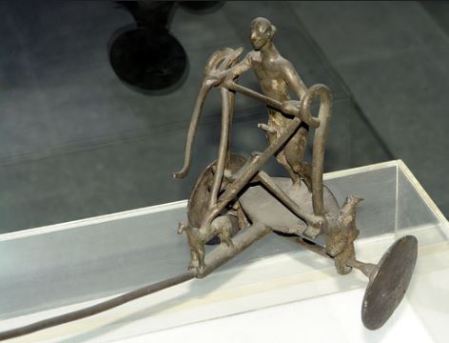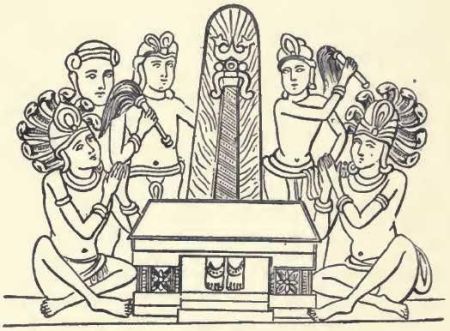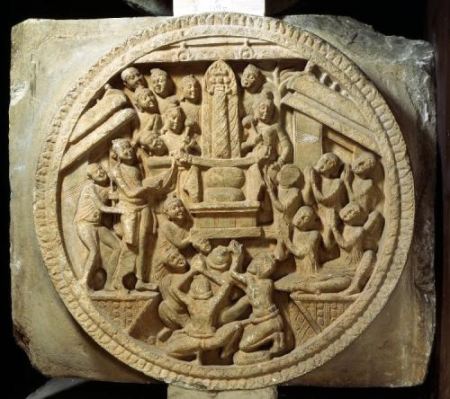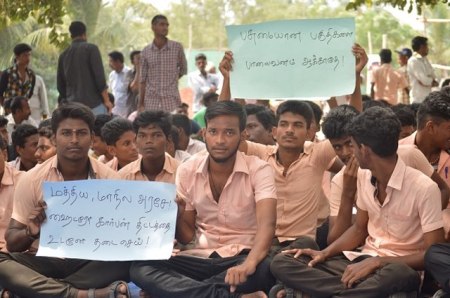Religious extremism is on the rise in Balochistan. Several factors are driving this, but undoubtedly one concerns Balochistan’s northern regions, specifically Zhob district, which adjoins the Federally Administered Tribal Areas (FATA). Following Operation Zarb-i-Azb in Fata, Tehreek-i-Taliban Pakistan (TTP) fighters and other banned religious outfits penetrated deep inside Balochistan, where they are reportedly regrouping. As a result, Quetta, the provincial capital of Balochistan, has been witnessing deadly assaults. A case in point is the August bombing at Quetta Civil Hospital, which killed more than 70 people, the majority of them lawyers.
This was followed in October by an attack on the Police Training College (PTC), involving heavily armed militants. More than 60 police cadets were killed. ISIS has claimed credit for both attacks.
Yet another act of terrorism took place the following month in Khuzdar District of Balochistan at Sufi Shrine of Shah Norani, where more than 50 pilgrims were killed. Again, ISIS claimed responsibility. This marked the third major attack carried out by ISIS in Balochistan in three months. It was an ominous development for Pakistan, and one that sent shockwaves around the world.
Enjoying this article? Click here to subscribe for full access. Just $5 a month.In the past, Pakistani authorities have flatly denied ISIS had a presence in their country, and in Balochistan in particular. While working on a piece for The Diplomat, “Can ISIS Gain a Foothold in Balochistan?” I still remember how a senior Quetta based senior police official airily dismissed a question I put to him about whether ISIS could gain a foothold in Balochistan. However, as I argued in my piece, “there is growing evidence that it is trying to do just that.”
Government officials have claimed that the assault on the Police Training College was carried out by the Lashkar-e-Jhangvi (LeJ) Al Alami, an offshoot of the banned LeJ. According to Balochistan Home Minister Mir Sarfaraz Bugti, “The attack was carried out by LeJ AL Almai originally, despite the fact it was claimed by ISIS, as well as its fake pictures were released by the same organization.”
But Quetta-based independent analysts say that members of LeJ have likely joined the ranks of the Islamic State, and are carrying out attacks in the Quetta city and elsewhere in the province.
Government officials have blamed Afghanistan for the attack. They argue that Afghanistan is being used as a safe sanctuary for militants who carry out attacks inside Pakistan. Authorities claim that, “Phone intercepts showed the three attackers received instructions from Afghanistan.”
However, noted Pakistaki journalist Ahmed Rashid wrote for the BBC: “Afghanistan is beset with civil war – five provincial capitals are presently under siege – it does not control the border regions between Pakistan and Afghanistan where IS is active, and it is equally difficult to believe why LeJ – a virulently anti-Shia group – should be undertaking acts of terrorism at the behest of the Afghan government. In fact, LeJ has carried out several attacks on Afghan Shias who belong to the Hazara minority.”
Root Cause
To understand the root cause of religious extremism in Balochistan, local security analysts say it should not be thought of as a sudden rise, but rather as a phenomenon that has developed over decades. For example, although Balochistan has historically been a secular province, it began to transform in the mid 1970s. Balochistan and Khyber Pakhtunkhwa border Afghanistan, and Afghan mujahideen were given safe sanctuary in these provinces, a response to the Afghan government’s soft spot for Baloch and Pashtun nationalists.
Sajid Hussain, a former assistant editor at the respected Pakistani English newspaper, The News International, explains. “At the time of General Zia-ul-Haq (1977-88), when religious extremism came to Pakistan, Balochistan was not badly affected by Zia’s policies. What did have an impact was the arrival of Afghan refugees in Quetta or elsewhere in the province. From the Pashtun belt of Balochistan up to Sibi, religious elements or, to be more specific, mujahideen elements brought with them the sentiments of jihad.”
Besides the northern parts of Balochistan, which are predominantly populated by local Pashtuns, Afghan refugees also poured into Baloch districts that border Afghanistan: Chaghi and Nushki. As a result, these regions have also been susceptible to religious extremism.
“First, in Balochistan, religious extremism was evident in Kech District of Balochistan, particularly in the town of Mand. Now, the same phenomenon is becoming apparent in Nushki and Chaghi,” Sajid Hussain observed. “In the beginning, these developments took place to counter the pan-Shia-ism in Balochistan, which borders Iran. The extremists supported Baloch Sunni groups.”
Hussain added, “Amongst the Iranian Baloch, there are religious elements involved in Baloch nationalism due to the presence of Baloch Sunni groups and the Shia Iran state. And Baloch nationalism in Iran is becoming increasingly religious in color. This is all due to the conflict between Shia and Sunni in Iran.”
Hotbed
In the 1960s and early 1970s, Balochistan was a hotbed of political activity, and many Baloch leaders and student activists were in the thrall of leftwing politics. In fact, educated Baloch at the time were oriented to the left, and took an active role in politics, forming the provincial government in Balochistan under the platform of the National Awami Party (NAP). Both Pakistan and Iran feared this secular Baloch nationalism in their respective provinces.
Following the Islamic revolution in Iran in 1979 that saw the ouster of Shah Mohammad Reza Pahlavi, and the installment of Ayatollah Ruhollah Khomeni as supreme leader of the Islamic Republic of Iran, Sunni Baloch felt further marginalized at the hands of the Shia state of Iran. Subsequently, Baloch nationalism amongst Iranian Baloch strengthened.
Today, the Baloch in Iran who are fighting for their rights against the Iranian state are mostly not secular. They are more or less Islamists, waging a war against Iran. Pakistan and Iran do not enjoy the same level of cooperation they had in the 1970s. There are reportedly more than three Sunni Baloch groups active on the border, and they have carried out attacks inside Iran. Iran holds Pakistan responsible, along with Saudi Arabia, America, and even on some occasions Israel, for supporting these groups. Pakistan vehemently denies the charge.
In Pakistan, meanwhile, General Zia’s reign proved to be disastrous for the politics of Balochistan, where religious forces were encouraged throughout his rule. According to Niamat Gichki, a Baloch author, “During the days of Zia, in Balochistan, for the first time, different ideas were sponsored against other sects in Balochistan, particularly Zikri Baloch. Annually, religious clerics would go to Turbat for functions like “Khathme Nabuwwat” (Finality of the Prophethood).”
He added, “Basically, it was used for election tactics because in Balochistan’s Makran division nationalists were winning. That was why the political parties and government of Islamabad thought that nationalists were winning with the support of Zikris. So, by cutting their relations with Zikri Baloch, they were creating rifts by weakening the strength of Baloch nationalists so that the nationalists would lose. They continued to do that, and they succeeded to some extent to break this bond between them. They also bribed the Zikri sects of Muslims. But it was short-lived.”
Even after Zia’s assassination, his policies remained intact. For example, in 1988, the Zikri card was again used by clerics. As a result, in the 1990s, Zikri Baloch began to face the wrath of the religious fundamentalists. But the religious fundamentalists did not get what they were after. One reason is that Makran and its adjoining areas, where Zikri Baloch are predominantly populated and their sacred religious places are located, are considered to be traditionally secular areas with high rates of literacy.
Sectarian Attacks
In the meantime, a new but lasting development of targeting Shia Hazara had began to take place in Balochistan in the mid-1980s. From 1998, and continuing today, it took on an uglier form. The banned Lashkar-e-Jhangvi and its affiliate groups have extensively targeted Shia Hazaras. According to rights groups, around 2, 000 Hazaras have been killed in sectarian attacks so far.
According to Sajid Hussain, “In Balochistan, the ‘systematic’ killing of Shias is not without a reason. For instance, if Iran can promote Shia Islam in the whole of the Middle East, how can it not look toward its own backyard, where Balochistan is situated? So, in this context, it can also promote pan-Shia-ism in Pakistan in general and Balochistan in particular. In short, Saudi-Arabia funds pan-Sunnism, while Iran funds Pan-Shia-ism in Pakistam. In order to counter pan-Shia-ism, a ‘systematic’ killing of Shia is ongoing.”
Hasan Raza Changazi, a senior Quetta based Hazara columnist, told The Diplomat, “Two political parties have influences on the Hazara community in Quetta: The Hazara Democratic Party (HDP) and the Majlis-e-Wehdatul Muslimeen (MWM). As for the HDP, it is a liberal party, which is in contact with other communities in Balochistan and liberal forces. Also, it calls the killings ‘Hazara Genocide’ and connects it to Saudi-Iran proxy war. The HDP is also striving to end sectarianism in the Balochistan province, as well as to create harmony among communities, irrespective of their sect, caste, creed, and religion.”
The analyst said that MWM wanted to unify Shia throughout Pakistan, and HPD considered MWM a proxy of the Iranian state.
Baloch nationalists, on the other hand, claim that the sectarian attacks have been used in the last fifteen years as a way to counter the Baloch nationalist movement by promoting Salafi Islam in Balochistan Province. They add that in this backyard of Iran the Saudi riyal is being used to promote Salafism against Shia-state Iran, where Sunni-Baloch are marginalized.
Whatever the truth, one thing is clear: Moderate Baloch nationalists, hardliner Baloch nationalists, and even Pashtun nationalists seemingly all oppose, and are afraid of, religious extremism in Balochistan. One senator, who declined to be named, told The Diplomat, “Balochistan’s political parties, which are ideologically secular, including the Balochistan National Party-Mengal (BNP-M), the National Party (NP), and the PkMAP, all are on the same page when it comes to religious extremism in the province, because we know that if they gain a foothold in Balochistan, it would be a threat to our own existence.”
Accordingly, security analysts argue that if the secular political parties of Balochistan, or those people with secular ideology, were to unite against religious extremism in Balochistan, it could be countered. Fail to unite, and the extremists will not be defeated, because they are state-sponsored; they have the financial backing of the Gulf-states. So much so, the pan-Islamic organizations, including Jamaat-e-Islami, the Muslim Brotherhood and the Hizb-ut-Tahrir are campaigning worldwide, not only in Balochistan, to revive the Caliphate. So, analysts say, in this context, they are also working in Balochistan to revive the Caliphate.
Dr. Shah Mohammad Marri, a prolific Baloch author, told this writer, “Yet, the Baloch, as a whole, have not gone into organized religion. Baloch respect both sects of Islam.”
Marri does acknowledge that, “In the settled areas of Baloch, where there is agriculture, they are religious in nature. Farmers tend to be more religious due to the uncertainty of agriculture. The ‘lumpen’ class of Baloch people are also religious because they have neither land nor other assets. As a result, they resort to violence.”
It is Balochistan’s northern reaches, predominantly populated by local Pashtuns, that contain the seeds of religious extremism. That extremism is now penetrating ideologically and territorially into other Baloch areas. For example, central Balochistan in general and Mastung in particular have turned into something approximating an epicenter of religious extremism. These developments are also radicalizing Baloch youth elsewhere in the province.
“I know for a fact that there are at least two madrassas in every district of Balochistan. They are funded; they are possible linked with terrorists; they are also carrying out actions,” said Rashed Rahman, a veteran Pakistani journalist and former editor of the Daily Times. “I think the whole idea is, first of all, politics. I divert politics into a religious-sectarian discourse, rather than nationalism or rights. Second, of course, is to carry out actions, which is a deliberate attempt to suppress the nationalist movement. This is a very dangerous move, because once you unleash these monsters, as you know from Afghanistan, you cannot control them.”
In Balochistan, sectarian elements have gained ground in recent years, and their presence has been felt across Balochistan. In Jhal Masgi, Nasirabad, Jafferabad, and elsewhere, sectarian elements have apparently also found safe sanctuary. From there, they have been carrying out attacks in neighboring Sindh province. More surprising, these places had historically been under the influence of Sindh’s pluralistic Sufi culture, but this is changing now with the introduction of madrassahs and sectarian elements. Slowly but surely, security analysts warn, this will affect Sindh as well.
A journalist from Balochistan’s Jhal Magsi district told The Diplomat, “In recent years, one can see the flags of ASWJ in every square of the bazaar. Who would raise these flags, if they did not have a presence in the town?”
Following the attack on Eidul Azha prayers in an imambargah at Shikarpur, media reports emerged that incidents of sectarian terrorism in Sindh in the past few years have been found to be linked to Baloch militants, who are affiliated with the Lashkar-e-Jhangvi and its affiliate groups. In this context, a Quetta-based analyst, speaking on condition of anonymity, explained: “In Balochistan, the LeJ is predominantly Baloch, in spite of the fact that Baloch have traditionally been considered secular. They are gaining momentum, where Baloch nationalist forces previously had strength. For instance, Mastung, which used to be the epicenter of Baloch nationalists’ activities, has now turned into something of a headquarters for a sectarian groups.”
He added, “In recent times, a segment of Baloch militants have joined the rank-and-file of sectarian and religious extremist groups in the province.”
When I interviewed senior police official Razzaq Cheema from Quetta, he told me that police had successfully been carrying out robust actions against religious and sectarian militant groups. According to Cheema, they had wiped out the top leadership of LeJ in Quetta city and elsewhere in the province, with Osman Saifullah Kurd, Mubashir Ahmed Kurd and Mehmood Rind all killed. He was confident that the police were equipped to take on any group.
Shift
Most critics of the security establishment continue to believe that the authorities have a soft spot for jihadist groups, still viewing them as a foreign policy tool. Yet some security analysts say this is no longer the case. They argue that the situation has changed since Malik Ishaque, who wanted to join the ISIS in Pakistan, was killed in an encounter with police in Punjab.
Since General Raheel Sharif became Chief of Army Staff, thinking within the military establishment has reportedly shifted. So, as a result, has policy, at least in some respects. These shifts only intensified following the horrific attack on Army Public School, in Peshawar, in the wake of which security forces across the country began taking robust action against the Pakistan Taliban and its affiliates. Some now argue that the action against the Taliban groups have prompted the latter to take on “soft targets” in Balochistan and elsewhere.
Shahzada Zulfiqar, a Quetta-based analyst, said, “Within the military, it seems, there is some sort of realization. For instance, the killing of Malik Ishaque suggests a wholesale shift in policy. Given that there have also been attacks on security forces by the religious extremist groups, the state has been taking action.”
He added, “There are still those who believe that this is a temporary shift in policy, and with the changing of guard and leadership they [the extremists] will be considered assets again. But I think this is unlikely, given the heavy cost.”
Pakistani security officials say these plots are designed to disrupt $46 billion China-Pakistan Economic Corridor (CPEC) project, which originates from Gawadar, Balochistan. According to them, the attack on the shrine in Balochistan took place the day after the first trade convoy carrying Chinese goods successfully arrived at Gawadar port. Senio civil and military leaders also believed that the attack at the Civil Hospital in Quetta was an attempt by “enemies of the country” to sabotage the ongoing CPEC project.
Last September, intelligence analyst Ian Price wrote about the threats to CPEC for The Diplomat. In this piece, he argued: “Unlike in traditional Taliban strongholds, Balochistan’s security arrangements are much less comprehensive. The same areas in Quetta, Balochistan’s capital city, are targeted over and over and over despite, or perhaps because of, headway in the FATA. And while the dominant ethnic group of the province is Baloch, there is still a sizable Pashtun population in northern Balochistan to blend into, including in and around Quetta. Balochistan also has its own border with Afghanistan that militants can move through.”
In March 2016, Sartaj Aziz, an advisor to Prime Minister Nawaz Sharif, admitted that Afghan Taliban leaders were based in Pakistan. Interestingly, the Afghan Taliban have never carried out an attack on Pakistani soil. Still, it is disconcerting to know that the various banned religious militant groups that do conduct deadly attacks within Pakistan find or have found safe sanctuary and training opportunities in rural parts of Afghanistan that are under the control of the Afghan Taliban. Look no further for the key factor behind the deadly attacks in Pakistan in general and in Balochistan in particular.





 Posted by kalyan97
Posted by kalyan97 
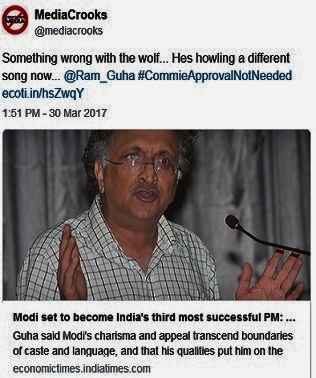

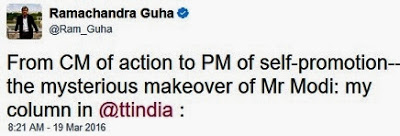
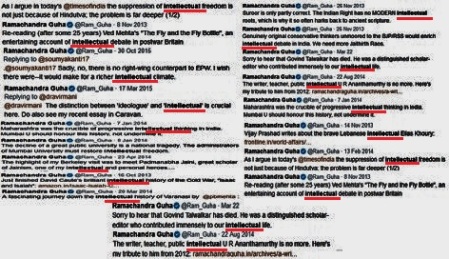
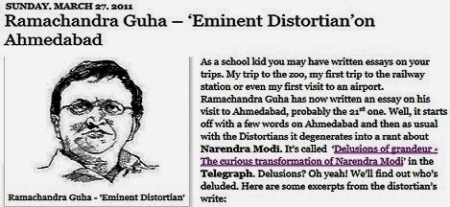
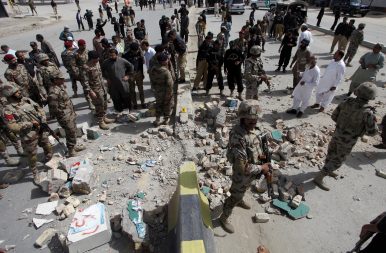
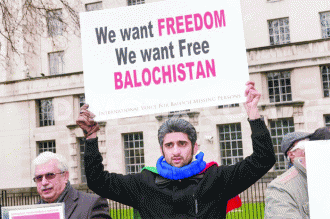 Tuesday, 04 April 2017 | Sandhya Jain
Tuesday, 04 April 2017 | Sandhya Jain
 This work of monumental research is a treatise on Ayodhya with utmost authenticity and absolute accuracy. Based on original sources and scientific investigation it propounds a new thesis, which demolishes many popular perceptions. It exonerates the intrepid warrior Babur from the charge of demolishing a temple on the birth-site of Rama and constructing the mosque which has been a source of contention and dissension for long. It further shows how inscriptions in the mosque were factitious and Mir Baqi of inscriptions is a fictitious person different from Baqi Tashkindi/Shegawal of the Baburnama. The book produces incontrovertible evidence which indubitably proves that there existed a Rama temple…
This work of monumental research is a treatise on Ayodhya with utmost authenticity and absolute accuracy. Based on original sources and scientific investigation it propounds a new thesis, which demolishes many popular perceptions. It exonerates the intrepid warrior Babur from the charge of demolishing a temple on the birth-site of Rama and constructing the mosque which has been a source of contention and dissension for long. It further shows how inscriptions in the mosque were factitious and Mir Baqi of inscriptions is a fictitious person different from Baqi Tashkindi/Shegawal of the Baburnama. The book produces incontrovertible evidence which indubitably proves that there existed a Rama temple…